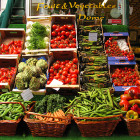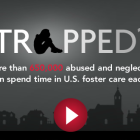
The results are in from two studies evaluating the effects of diet on children with attention-deficit/hyperactivity disorder (ADHD). While neither study resulted in data conclusively linking dietary habits to ADHD, researchers suggest that children with diets high in fiber, folate and omega-3 fatty acids may be at a lesser risk for developing ADHD symptoms than children with diets high in processed and preservative-rich foods. Researchers at Children’s Memorial Hospital in Chicago recently conducted research analyzing the findings of several studies that attempted to uncover whether changes in diet and dietary supplements provided any effect on children displaying ADHD symptoms. The study coincides with similar research conducted by Steven & Alexandra Cohen Children’s Medical Center of New York, the results of which will be published in next month’s issue of Pediatrics. Both studies appear to discount the influence of high sugar diets and foods containing large amounts of additives and dyes in the development of ADHD symptoms in children, such as inattention and impulsivity. However, Children’s Memorial Hospital in Chicago study author Dr. J. Gordon Millichap said that he did believe that children displaying ADHD symptoms may benefit from “elimination diets” that omit milk, cheese, nuts and other common allergenic foods, although he considers such diets “difficult for families to manage.”
Dr. Andrew Adesman, Chief of Developmental and Behavioral Pediatrics at Steven & Alexandra Cohen Children’s Medical Center of New York, said that despite research results, there’s no evidence present that establishes dietary habits as an effective form of treating ADHD symptoms.
“For better or worse, medications are the single most effective treatment available for ADHD,” he said.









